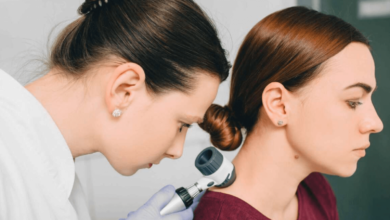Goosebumps Definition: Understanding the Body’s Mysterious Reaction

Have you ever experienced a sudden chill running down your spine or noticed tiny bumps appearing on your skin for no apparent reason? These peculiar sensations are commonly known as “goosebumps.” While they may seem mysterious, goosebumps are actually a fascinating physiological response of the human body. In this article, we will delve into the goosebumps definition, explore their causes, and understand their evolutionary significance.
Table of Contents
- What Are Goosebumps?
- The Science Behind Goosebumps
- 2.1 The Role of Arrector Pili Muscles
- 2.2 Nervous System Involvement
- Causes of Goosebumps
- 3.1 Emotional Triggers
- 3.2 Temperature Changes
- 3.3 Hair Stimulation
- 3.4 Music and Aesthetic Experiences
- Evolutionary Significance of Goosebumps
- Controlling Goosebumps
- Conclusion
- FAQs
1. What Are Goosebumps definition?
Goosebumps definition, medically known as cutis anserina, refer to the temporary elevation of small bumps on the skin, usually caused by contraction of the arrector pili muscles. These muscles are connected to hair follicles and contract when stimulated, causing the hair to stand upright and creating a characteristic “bumpy” appearance on the skin surface.
2. The Science Behind Goosebumps
2.1 The Role of Arrector Pili Muscles
The arrector pili muscles are small, smooth muscles that connect to hair follicles. Their primary function is to respond to external stimuli, such as cold temperatures or emotional arousal. When these muscles contract, they pull the hair follicles upright, causing goosebumps to appear on the skin. In animals, this response can also serve as a form of defense mechanism by making the individual appear larger or more intimidating.
2.2 Nervous System Involvement
The activation of the arrector pili muscles is controlled by the autonomic nervous system, which is responsible for regulating involuntary bodily functions. The sympathetic nervous system, specifically, plays a significant role in triggering the contraction of these muscles. When the body perceives a threat or experiences heightened emotions, the sympathetic nervous system releases adrenaline, leading to the contraction of the arrector pili muscles and the subsequent formation of goosebumps.
3. Causes of Goosebumps definition
3.1 Emotional Triggers
One of the most common causes of goosebumps is emotional arousal. Strong emotions, such as fear, excitement, or awe, can activate the sympathetic nervous system, resulting in goosebumps. For example, when watching a suspenseful movie or listening to a moving piece of music, you may notice goosebumps appearing on your skin.
3.2 Temperature Changes
Exposure to cold temperatures can also induce goosebumps. When the body becomes cold, the arrector pili muscles contract to create a layer of trapped air between the hairs, which acts as insulation and helps to retain body heat. This contraction leads to the formation of goosebumps and is an evolutionary remnant from our ancestors who had more body hair.
3.3 Hair Stimulation
Direct stimulation of the hair follicles can also cause goosebumps. Light touches, such as a gentle caress or a soft breeze, can trigger the arrector pili muscles to contract, resulting in the appearance of goosebumps.
3.4 Music and Aesthetic Experiences
Certain sounds, melodies, or aesthetically pleasing experiences can evoke strong emotions and trigger goosebumps. This phenomenon, often referred to as “musical frisson” or “skin orgasm,” is characterized by a pleasurable tingling sensation and the appearance of goosebumps. Researchers believe that the brain’s reward system and the release of dopamine may play a role in this response.
4. Evolutionary Significance of Goosebumps
Goosebumps have a fascinating evolutionary history. In our primitive ancestors, who had more body hair, goosebumps played a vital role in keeping them warm. When the body experienced cold temperatures or perceived threats, the contraction of arrector pili muscles would raise the hair, creating a thicker layer of insulation. This response allowed our ancestors to maintain their body temperature and protect themselves from predators.
5. Controlling Goosebumps
While goosebumps are primarily an involuntary response, some individuals have learned to control them to a certain extent. Through relaxation techniques, meditation, or exposure therapy, it is possible to influence the autonomic nervous system and modulate the occurrence of goosebumps. However, mastering such control requires practice and is not achievable for everyone. Read more…
6. Conclusion
Goosebumps definition, characterized by the appearance of small bumps on the skin, are a remarkable response of the human body. Triggered by emotional arousal, temperature changes, hair stimulation, or aesthetic experiences, they serve as a remnant of our evolutionary past. Understanding the science behind goosebumps allows us to appreciate the complexity of our bodies and the intricate interplay between our nervous system and external stimuli.
7. FAQs
Q1: Can everyone experience goosebumps? A1: Yes, goosebumps are a universal physiological response and can be experienced by people of all ages and genders.
Q2: Are goosebumps harmful in any way? A2: No, goosebumps are a normal bodily response and pose no harm. They are simply an interesting quirk of our physiology.
Q3: Can medications or medical conditions affect the occurrence of goosebumps? A3: Yes, certain medications or medical conditions, such as anxiety disorders or certain skin disorders, may influence the frequency or intensity of goosebumps.
Q4: Are there any other animals that experience goosebumps? A4: Yes, many mammals, including dogs and cats, can also experience goosebumps. In some animals, this response serves as a defense mechanism or a way to communicate fear or aggression.
Q5: Is there any relationship between goosebumps and the “fight or flight” response? A5: Yes, goosebumps are closely linked to the “fight or flight” response, which is triggered by the sympathetic nervous system in response to perceived threats or emotional arousal.




